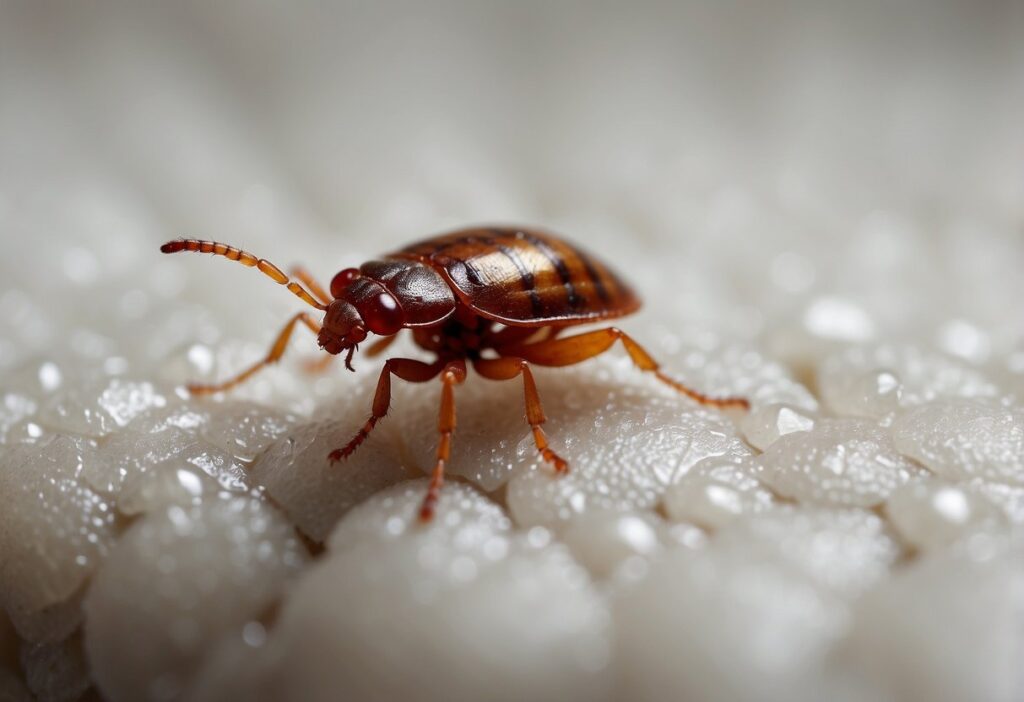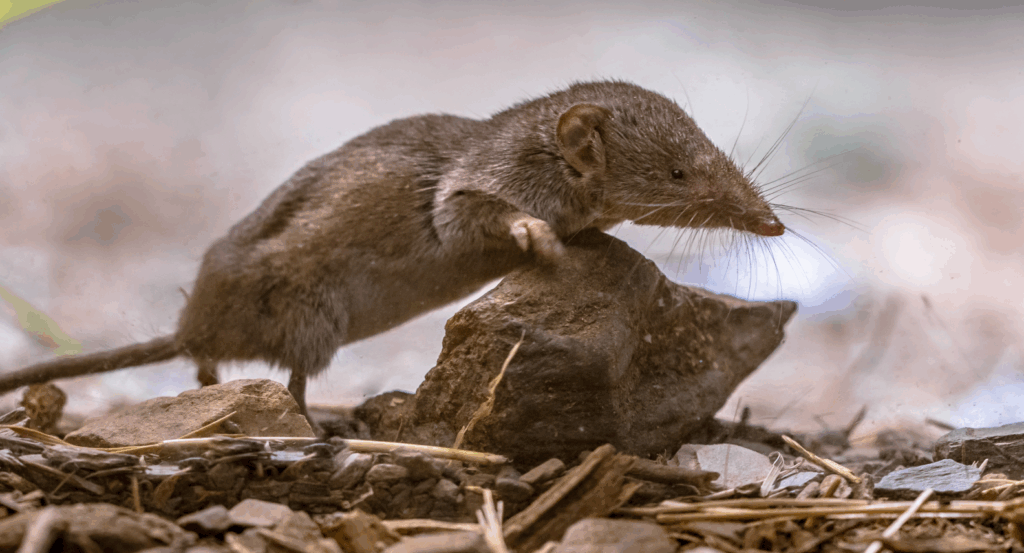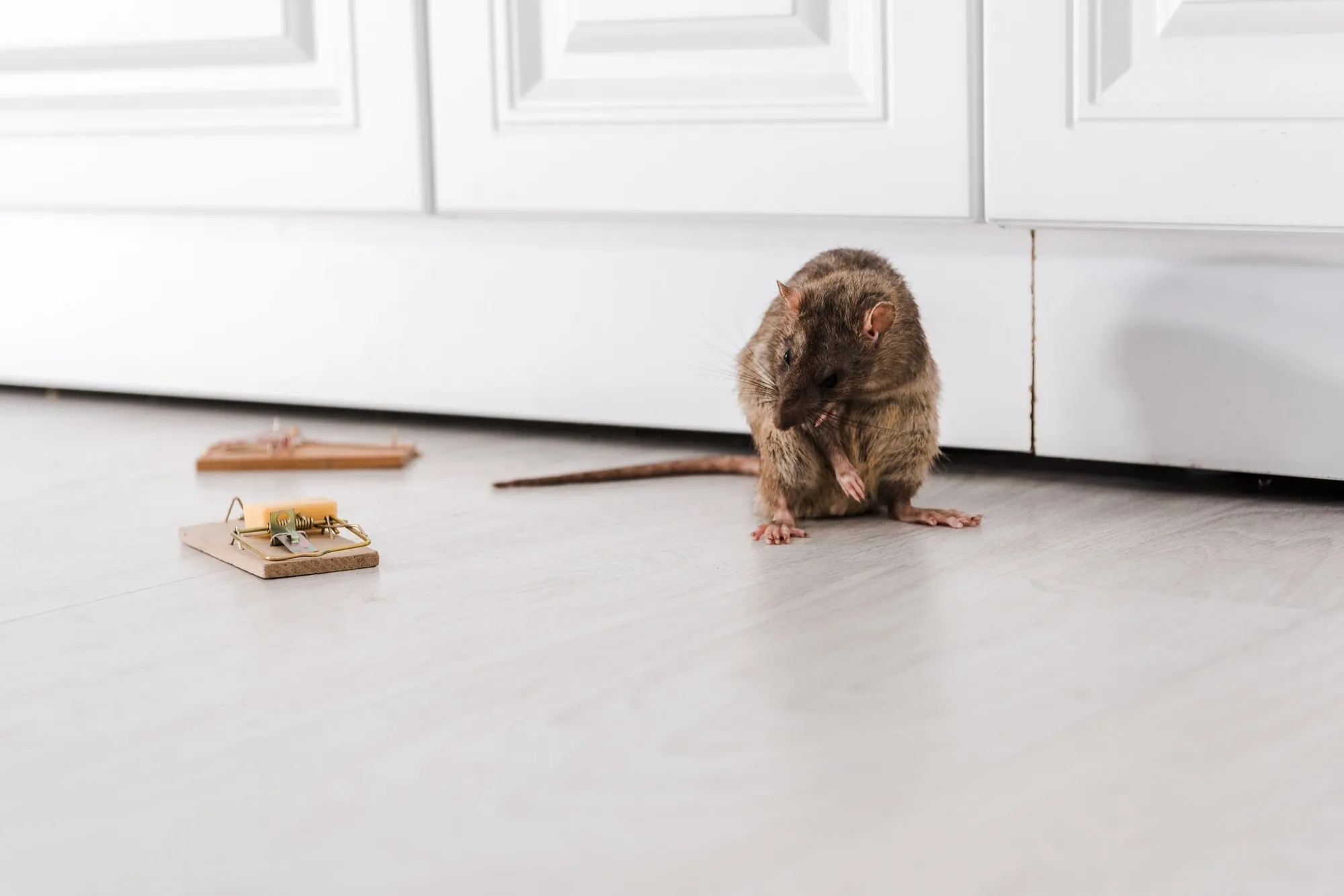What Are the Common Rat Species Infesting Sydney?
Sydney homes and businesses face three primary rodent invaders: Norway rats, roof rats, and house mice.
1. Norway Rats
Norway rat control sydney properties encounter are large, brown rodents with blunt noses and thick bodies, typically burrowing in basements and ground-level areas.
2. Roof Rats
Roof rats Sydney residents battle are sleek, black rodents with pointed noses and long tails, preferring elevated spaces like roof cavities and wall voids.
3. House Mice
House mice Sydney infestations involve smaller, grey-brown rodents that squeeze through gaps as small as 6mm, nesting in warm, hidden areas throughout buildings.
Each species exhibits distinct behaviours that influence control strategies:
- Norway rats establish underground tunnel systems and forage within 30 metres of their nests.
- Roof rats climb with agility and travel along power lines and tree branches.
- House mice are curious explorers, investigating new objects and contaminating food stores with their constant urination.
The risks these rodents pose extend beyond mere nuisance:
- They transmit diseases including leptospirosis, salmonellosis, and hantavirus through droppings and urine.
- Their gnawing habits damage electrical wiring—creating fire hazards—and compromise building structures.
- A single female rat produces up to 60 offspring annually, meaning small infestations escalate rapidly without proper intervention.
Understanding which species you’re dealing with determines the most effective approach among the top 5 rat control Sydney methods that prevent reinfestation.

How Do Professional Pest Control Services Manage Rat Infestations?
Professional pest control Sydney experts begin with a comprehensive property assessment to locate active infestations and vulnerable areas. Certified technicians examine roofs, wall cavities, subfloors, and entry points whilst documenting evidence such as droppings, gnaw marks, grease stains, and urine trails.
The pest inspection process identifies the species present and determines infestation severity. Professionals use thermal imaging cameras to detect rats within walls and ceiling spaces, creating a targeted treatment plan based on their findings.
Rodent Trapping Methods
Technicians deploy multiple rodent trapping methods suited to specific situations:
- Snap traps: Traditional mechanical devices placed along rat runways and near nesting sites
- Glue boards: Adhesive traps positioned in areas where snap traps aren’t suitable
- Live capture traps: Humane options for sensitive environments requiring relocation
Strategic Baiting Programmes
Pest control professionals use rodenticides within tamper-resistant bait stations, positioned strategically around properties. These secure containers prevent access by children, pets, and non-target wildlife whilst allowing rats to consume the bait safely.
Hiring certified experts provides distinct advantages. Professionals possess knowledge of rat behaviour patterns, access to commercial-grade products unavailable to the public, and training in safe pesticide application. Their systematic approach addresses both visible infestations and hidden populations, reducing the risk of incomplete treatment that leads to recurring problems.
What Exclusion Techniques Are Used to Prevent Rat Entry?
Exclusion techniques serve as the cornerstone of long-term rat prevention by physically blocking rodents from entering properties. Rats can squeeze through openings as small as 12mm, making thorough sealing entry points essential for effective control.
Professional pest controllers identify vulnerable areas where rats commonly gain access:
- Foundation gaps where walls meet the ground
- Utility penetrations around pipes, cables, and vents
- Roof eaves and soffit gaps that provide access to attics
- Door sweeps and window frames with worn weatherstripping
- Weep holes in brick veneer construction
To combat these issues, it’s crucial to adopt comprehensive strategies that not only exclude rats but also prevent mice from entering. This is where exclusion methods come into play, effectively keeping both rats and mice out of properties.
Rodent proofing methods rely on durable materials that rats cannot gnaw through. Steel wool combined with caulk creates an effective barrier for smaller gaps, whilst expanding foam alone fails because rats chew through it easily. Cement mortar or concrete patches seal larger holes in foundations and walls permanently.
Metal flashing protects roof edges and ventilation openings. Mesh screens with 6mm or smaller openings cover vents and chimneys without blocking airflow. Door sweeps made from rubber or brush strips eliminate gaps beneath exterior doors.
The success of exclusion lies in its preventive nature—rats cannot infest spaces they cannot enter. When combined with proper sanitation, these physical barriers eliminate the need for continuous chemical treatments. Properties with comprehensive exclusion work rarely experience reinfestation, even in areas with high rodent populations.
How Does Environmental Management Help in Sustaining Rat Control?
Environmental management rats strategies target the resources rodents need to survive. Eliminating food sources, water access, and shelter makes properties inhospitable to rats, forcing them to relocate elsewhere.
1. Sanitation for pest control
Sanitation for pest control begins with rigorous cleaning routines that remove crumbs, spills, and food residue from kitchens, dining areas, and storage spaces. Pet food should never remain in bowls overnight, and bird feeders require regular cleaning to prevent seed accumulation on the ground. Compost bins need secure lids, whilst rubbish must be stored in sealed containers that rats cannot penetrate.
2. Vegetation trimming
Vegetation trimming eliminates the protective cover rats use when moving between nesting sites and food sources. Shrubs and tree branches touching buildings create highways for roof rats to access upper levels. Maintaining a clear zone of at least 30 centimetres between plants and exterior walls removes these pathways. Dense ground cover like ivy provides ideal nesting material and should be kept well-trimmed or removed entirely near structures.
3. Proper waste disposal practices
Proper waste disposal practices form the foundation of long-term prevention. Wheelie bins require tight-fitting lids and regular washing to remove odours that attract rodents. Commercial properties benefit from scheduled waste collection that prevents overflow, whilst residential areas should avoid leaving rubbish bags outside overnight.
These methods work synergistically—clean environments combined with sealed entry points create inhospitable conditions that discourage rat populations from establishing themselves.
What Integrated Pest Management (IPM) Strategies Are Effective Against Rats?
Integrated pest management rats strategies combine multiple control methods to create a comprehensive defense system that addresses infestations from different angles. This approach blends chemical treatments like rodenticides with non-chemical solutions such as traps and exclusion techniques, ensuring no single method becomes the sole line of defense.
Chemical and Non-Chemical Integration
Professional pest controllers layer baiting programs with mechanical traps and physical barriers. This multi-pronged approach prevents rats from developing resistance patterns whilst maintaining continuous pressure on the population through varied control mechanisms.
Ultrasonic Devices Rodents
Ultrasonic devices rodents emit high-frequency sound waves that create discomfort for rats without affecting humans or pets. These electronic repellents work best as supplementary tools in conjunction with traditional methods, particularly in areas where chemical treatments may be restricted.

Natural Rodent Predators
Encouraging natural rodent predators like owls, kestrels, and native snakes provides biological control in outdoor environments. Installing owl boxes near properties or maintaining habitats for these predators creates a sustainable deterrent that requires minimal human intervention.
Long-Term Prevention Benefits
IPM reduces reliance on chemical treatments alone, minimising environmental impact whilst maintaining effectiveness. The strategy adapts to changing rodent behaviour patterns and seasonal variations, creating resilient protection that remains effective even as rat populations attempt to reestablish themselves. Regular assessment of all IPM components ensures each element continues contributing to the protective barrier around your property. For detailed guidelines on implementing Rodent IPM strategies, refer to the provided resource.
Why Is Ongoing Monitoring and Maintenance Crucial After Initial Treatment?
Rodent monitoring Sydney services remain essential even after successful initial treatment because rats can quickly return if conditions allow. Continuous vigilance catches new activity before it escalates into a full-blown infestation.
Regular property inspections identify rat infestation signs post-treatment that indicate potential problems:
- Scratching sounds in walls or ceilings during night hours
- Fresh droppings appearing in previously cleared areas
- Musty odours suggesting hidden nesting sites
- New gnaw marks on food packaging or structural materials
Maintenance pest control requires property owners to preserve the integrity of exclusion work. Sealed entry points can deteriorate over time due to weather exposure or building settlement. Checking these barriers every few months prevents rats from exploiting new vulnerabilities. Environmental cleanliness must continue as well—accumulated rubbish or overgrown vegetation quickly recreates ideal conditions for rodent activity.
Professional follow-up visits provide expert assessment that untrained eyes might miss. Certified technicians spot subtle warning signs and address them before reinfestation occurs. Many pest control companies include warranties covering their work, offering free retreatment if rats return within a specified period. This guarantee demonstrates confidence in their methods whilst protecting your investment.
The Top 5 Rat Control Sydney Methods That Prevent Reinfestation all depend on sustained effort rather than one-time fixes. Combining professional expertise with consistent property management creates lasting protection against these persistent pests.
Related : Rat Exterminator Sydney: How Do Professionals Find Hidden Nests?

